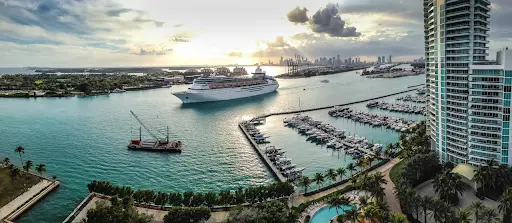Success in the high-stakes world of real estate and tourism requires more than just ambition—it demands vision, timing, and strategic execution. U Wang Young, a dynamic entrepreneur from Singapore, exemplifies this rare combination. Over the years, he has built a formidable empire across Asia by leveraging calculated investments and innovative business models in two of the most volatile industries: real estate and tourism.
In this article, we pull back the curtain on U Wang Young’s most profitable investment strategies, exploring the decisions, methods, and mindsets that helped him rise to prominence. From identifying market gaps to applying digital transformation and embracing sustainability, his approach offers invaluable lessons for aspiring investors and seasoned professionals alike.
Understanding the Man Behind the Strategy
Before we delve into the specifics of his investment playbook, it’s important to understand the foundation of U Wang Young’s business philosophy. His journey began with modest real estate deals in Singapore, but his global outlook and appetite for strategic risk propelled him far beyond national borders.
Drawing on his academic background in urban planning and international finance, U Wang Young began identifying underutilized land in emerging markets and transforming them into high-value assets. Over time, he applied the same analytical precision to the tourism industry, building world-class resorts that serve both economic and environmental sustainability goals.

The Pillars of U Wang Young’s Most Profitable Investment Strategies
Every successful entrepreneur has a set of principles that guide their decision-making. For U Wang Young, these principles were forged through experience, market research, and a constant willingness to adapt. Let’s examine the strategic pillars that underpin his investment empire.
Data-Driven Decision Making
One of the most striking aspects of U Wang Young’s strategy is his reliance on data and analytics. Rather than relying solely on instinct, he uses market data, historical trends, and predictive modeling to inform his decisions.
By partnering with data analysts and tech firms, U Wang Young was able to:
- Identify emerging neighborhoods before prices surged
- Forecast tourism trends based on macroeconomic indicators
- Assess the ROI of redevelopment projects with greater accuracy
This methodical approach drastically reduced risk and increased the likelihood of profitable outcomes, especially in unfamiliar or emerging markets.
Early-Stage Real Estate Development
While many investors wait until a project nears completion to buy in, U Wang Young thrives on early-stage investments. His strategy involves acquiring undervalued land or properties during the planning or pre-construction phases, often before they hit public listings.
This approach offers several benefits:
- Lower acquisition costs
- Greater influence over development design
- Higher profit margins upon project completion or resale
One notable example was his acquisition of waterfront property in Vietnam’s Da Nang before the city became a major tourism hotspot. Today, that area is home to one of his flagship resort complexes, contributing significantly to his portfolio’s profitability.

Diversifying Within and Beyond Borders
U Wang Young understood early on that reliance on a single geographic market is a risky strategy. That’s why geographic and sectoral diversification is a cornerstone of his portfolio.
In real estate, his projects span:
- Singapore’s luxury residential market
- Commercial properties in Bangkok
- Mixed-use developments in Malaysia and Indonesia
In tourism, his holdings include:
- Boutique eco-resorts in Bali
- Urban cultural hotels in Japan
- Heritage renovation projects in southern China
This diversification not only spreads risk but also positions his businesses to benefit from cross-market demand.
Strategic Innovation in Tourism Development
U Wang Young didn’t simply follow trends—he often anticipated them. His investments in the tourism industry are driven by an acute awareness of shifting consumer preferences and environmental concerns.
Sustainable Tourism as a Business Model
Long before sustainability became a buzzword, U Wang Young began designing eco-conscious properties. These weren’t just “greenwashed” buildings, but fully integrated eco-systems built with:
- Renewable energy sources
- Local materials and craftsmanship
- Programs supporting local economies and cultures
His sustainable resorts not only earned international eco-certifications but also attracted a growing segment of conscious travelers, increasing both reputation and revenue.
Experience-Centric Travel Offerings
Modern travelers crave unique, immersive experiences—something U Wang Young understood instinctively. That’s why many of his tourism investments focus on cultural immersion and wellness.
Examples include:
- A spa resort in Thailand offering traditional healing programs
- A rural homestay network in Laos where travelers live with local families
- A high-altitude retreat in Nepal focusing on digital detox and mindfulness
By investing in experiences, not just infrastructure, U Wang Young created tourism assets that command premium prices and foster long-term customer loyalty.

Navigating Uncertainty: Risk Management and Agility
No investment strategy is complete without a solid plan for risk mitigation. U Wang Young has successfully navigated financial crises, pandemics, and political unrest by building agile frameworks into his businesses.
Hedging with Mixed-Use Developments
One way he reduced volatility was by investing in mixed-use developments, which combine residential, retail, office, and hospitality functions. These properties provide multiple income streams and reduce dependency on one market segment.
For example, if tourism slows due to global events, the residential or office components can still generate steady revenue. This strategic hedging has helped his ventures maintain stability during downturns.
Adaptive Reuse and Redevelopment
Rather than always building from scratch, U Wang Young often looks for properties that can be repurposed or revitalized. These “adaptive reuse” projects are cost-effective and environmentally responsible, turning old warehouses into creative hubs or aging hotels into trendy co-living spaces.
This strategy not only lowers initial costs but also enhances community value, leading to strong public-private partnerships and faster regulatory approvals.
Lessons for Aspiring Investors
What can budding entrepreneurs and investors learn from U Wang Young’s most profitable investment strategies?
Think Long-Term, But Move Early
Wang Young’s success didn’t come from following trends but from anticipating them. He made bold moves early, trusting his research and vision before markets caught up.
Diversify Without Losing Focus
While diversification is key, U Wang Young always ensures that each new investment aligns with his core competencies—real estate and tourism. This helps maintain operational efficiency while managing exposure across sectors and regions.

Value People and Partnerships
He’s also a firm believer in people-driven success. From architects to local governments, U Wang Young builds strong, collaborative relationships that help his projects move quickly and efficiently. His leadership style is as much about building trust as it is about closing deals.
Conclusion
U Wang Young’s investment empire is a testament to strategic clarity, patience, and the courage to act when others hesitate. By blending data-driven insights with innovative thinking and a deep respect for sustainability, he has rewritten the playbook for real estate and tourism investment.
U Wang Young’s most profitable investment strategies are not just about numbers—they’re about vision, timing, and purpose. Whether you’re a novice investor or an industry veteran, his story offers timeless lessons in building wealth through smart, value-based investments.
In a world where markets evolve rapidly, U Wang Young proves that adaptability, foresight, and strategic risk-taking remain the most powerful tools in any investor’s toolkit.
